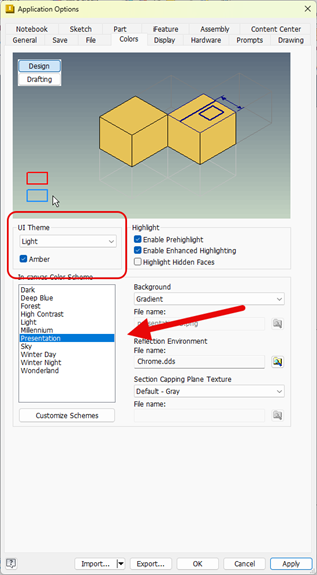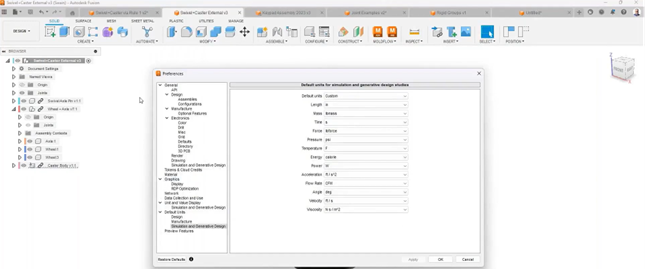Computer-aided design, or CAD, has been groundbreaking in architecture, engineering, and production design. With its speed and precision in bringing ideas to life, CAD software combines tools and mathematical equations for highly complex drawings and designs, hence demanding high levels of accuracy.
Despite being a game-changer in design, CAD is not without its challenges. Architects, construction managers, and engineers must undergo comprehensive training to harness its full potential. For instance, mastering the intricate layering system in CAD can be daunting. Layers are crucial for organizing different design elements, like electrical, plumbing, and structural components. Without proper training, users might struggle to manage these layers effectively, leading to confusion, errors in the design process, and costly delays in project timelines.
Moreover, CAD software is constantly evolving with new features and updates, making it hard for both experts and novices alike to keep up. Teams often have members with different levels of CAD skills, which can slow down projects and affect quality. Many turn to free online tutorials for learning, which, while cost-effective, often lack the depth and structure needed for comprehensive learning.
This is where reliable online CAD training becomes crucial. Is it the right choice for your team? In this article, we will explore the benefits and drawbacks of online CAD training and key qualities to consider when selecting a good training provider.
Advantages of Online CAD Training
Structured Learning Path
Online CAD training programs offer a structured curriculum designed to build knowledge systematically, allowing your team to cover all necessary topics in a logical sequence and avoid gaps in their understanding.
Your team might start with basic tools and commands and gradually progress to more complex modeling applications in a formal training course. A step-by-step approach helps solidify foundational skills before tackling advanced concepts, assuring a thorough understanding of the software.
One of the most critical aspects missed without formal training is the structured flow of learning. Formal CAD training programs follow a roadmap that covers foundational concepts before moving on to more advanced tools and techniques. Such a structured approach ensures learners build on a solid foundation, unlike the scattered and out-of-order nature of many online tutorials. Additionally, Google often prioritizes older videos with high engagement, which may not reflect the latest software updates and best practices.
Instructor Guidance and Feedback
Training sessions often include access to experienced instructors who provide immediate feedback, answer questions, and offer personalized advice. These experts offer tailored guidance on complex projects, identifying errors and suggesting solutions that might not be easily found in general YouTube tutorials. Personalized feedback helps your team learn more efficiently and apply best practices.
Another significant advantage of formal training is having questions answered by a live instructor. If your team members struggle with specific tasks or concepts, a live instructor can provide immediate feedback and solutions by seeing their screens and working through problems together. This interactive element is invaluable for effective learning and problem-solving.
Accreditation and Certification
Many online CAD training programs offer certification upon completion, which can refine your team’s credentials and career prospects.
Earning certifications from a reputable institution can demonstrate a certain level of proficiency to clients and stakeholders, which will give your company an edge in competitive projects and contracts, showcasing your team's verified skills and commitment to professional development.
Potential Pitfalls of Online CAD Training
Costly
There’s no denying that online CAD training programs can be expensive, which may not be feasible for all teams, especially for smaller companies with limited budgets.
Action Plan: Assess the potential return on investment by considering how the training will enhance your team's performance and contribute to the organization's success. Conduct a cost-benefit analysis to determine if the long-term gains in productivity and project quality justify the initial expense.
Time Commitment
Structured training programs often require a significant time commitment, which can be challenging for professionals with busy project schedules or tight deadlines.
Action Plan: Plan and allocate time effectively to ensure the team can benefit from the training without compromising project deadlines and productivity. Consider integrating training sessions into the team's workflow by scheduling them during less intensive periods or breaking the training into manageable modules that can be completed over time.
Quality of Training
The quality of online CAD training varies widely. Some programs offer comprehensive, instructor-led courses with interactive components and real-time feedback, while others might lack depth and engagement.
Action Plan: Thoroughly research and select reputable training providers with positive reviews and proven success to ensure your team receives high-quality education that translates into practical skills. Look for programs with detailed curricula, experienced instructors, and interactive elements that foster engagement and real-world application of the skills learned.
Characteristics of a Good Training Program: The Hagerman & Company Approach
Investing in comprehensive CAD training is necessary to bridge skill gaps, boost productivity, and avoid costly inefficiencies. With teams maximizing CAD’s full capabilities, businesses can ultimately save time and resources, amplifying precision and efficiency, while staying abreast of the software’s ever-evolving nature.
Hagerman & Company exemplifies best practices in CAD training with its comprehensive and flexible approach, including:
Flexible Scheduling Options
Hagerman & Company offers standard classroom sessions with specific dates listed on the website, such as a 3-day AutoCAD new user class. For example clients can complete the class over three consecutive days
Customized training options are also available, allowing sessions to be spread out over several weeks, such as one day a week for three weeks. Additionally, clients can schedule a session, apply the learned information on the job for a week or two, and then return for the next session.
Remote Training Accessibility
Both on-site and remote training options are available to meet diverse client needs. On-site training allows for hands-on, in-person instruction, while remote training offers the same benefits with added flexibility and access to industry-specific experts without the need for travel.
Customized Training Programs
Hagerman & Company conducts an in-depth needs assessment before training to understand the specific requirements and goals of the company. This assessment involves assigning a resource to learn about the client’s current processes and objectives. Based on this assessment, the experts from Hagerman & Company will develop a tailored training program to maximize the impact of the training.
Comprehensive Pre-Training Assessment
As part of the pre-training assessment, Hagerman & Company engages with end users to evaluate their current skill levels and comfort with CAD tools, which helps build a customized training program that allows all participants to start at the same proficiency level.
The training may begin with less experienced users, such as new employees, to bring them up to speed before progressing to more advanced concepts for seasoned professionals.
Proven Track Record and Testimonials
Hagerman & Company boasts an impressive track record in providing CAD training, with numerous success stories from satisfied clients. Testimonials and quotes from training surveys highlight the effectiveness of their programs, demonstrating timely and accurate training delivery. These testimonials underscore Hagerman’s commitment to high-quality training and client satisfaction.
Certification and Reporting
Each student who completes a Hagerman & Company training course receives a Certificate of Completion detailing the hours of the course, instructor name, and the software learned. This certification can be self-reported to relevant professional organizations, amplifying the participant's credentials and demonstrating their proficiency to clients and stakeholders.
Evaluating the ROI of CAD Training
Investing in Hagerman & Company’s CAD training programs expedites learning curves and increases productivity. Post-training, students can focus on their job roles instead of struggling with software, leading to significant time and resource savings.
Additionally, Hagerman offers a "train the trainer" option, establishing sustainable skill development within the company. This approach boosts individual capabilities and fosters a culture of continuous learning and improvement within the organization.
Collaborative Training Benefits
Customized training sessions with a room of students from the same company are highly beneficial. The synergy between Hagerman & Company’s software expertise and the client’s product knowledge creates effective and quick learning outcomes customized to the company’s specific needs.
Is It Time for Your Team to Get CAD Training?
When evaluating if it's time for your team to get CAD training, consider several key factors. Primary reasons for seeking training include:
-
Purchase of new software – Making sure your team can effectively utilize new tools.
-
Onboarding new hires – Bringing new team members up to speed with the necessary CAD skills.
-
Adding new functionalities – Upgrading existing software capabilities that your team needs to utilize effectively.
Relying solely on YouTube tutorials for CAD learning can lead to several common mistakes. These tutorials are often short, typically only three to five minutes, designed to hold the viewer's attention rather than provide comprehensive instruction. Such brief videos often miss important details necessary for a thorough understanding of CAD tools and techniques.
If you notice your team struggling with software, relying on outdated or incomplete YouTube tutorials, or missing foundational CAD concepts, it’s a clear indication that formal CAD training is needed. Choosing the right training program involves assessing your team's specific needs and ensuring the program offers comprehensive, up-to-date content with live instructor support to maximize learning outcomes.
For reliable, reputable CAD support, consult the professionals at Hagerman. As an Autodesk partner since 1984, our team provides the expertise needed to utilize modern CAD systems, transition efficiently from legacy systems, and drive your organization forward. Learn more about the Hagerman Training & Support and how we can help elevate your team’s CAD capabilities.




Comments